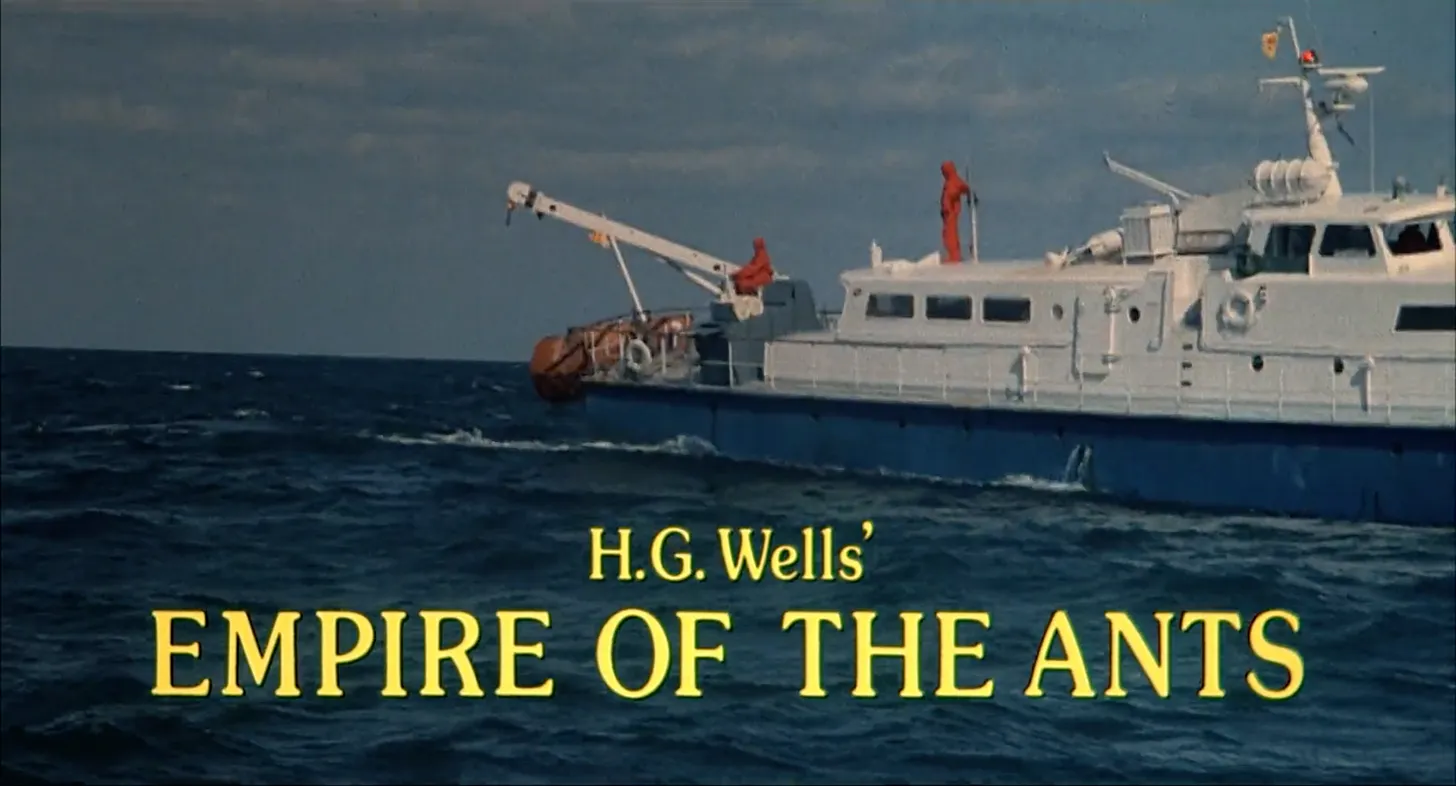 Originally published 6/11/22 on Substack
Originally published 6/11/22 on Substack
Empire of the Ants was one of two winners of the April poll to select a film for me to write about. Inevitably, there are spoilers here, and when I say spoilers, I mean a pretty good twist in the third act. Read with care. Thanks!
What is it? Empire of the Ants, directed by Bert I. Gordon, written by Bert I. Gordon and Jack Turley, and starring Joan Collins, John David Carson, Robert Lansing, Pamela Susan Shoop, Robert Pine, and Brooke Palance as Christine Graham.
First viewing? No; last seen 22 May 2022, and before that, 15 June 2015. Seen at least two times before that, maybe even three.
What are your thoughts about it? Bert I. Gordon was a huckster auteur, the kind of filmmaker who picked up on trends and worked tirelessly to exploit those trends with a movie thrown together as quickly as possible. In the ’50s, that trend was atomic energy, so Gordon gave us giant men and giant grasshoppers created from radiation. In the 70s, that trend was eco-horror - the idea that the Earth might strike back at us for the shit we’ve done to it1. Gordon gave us two pictures on that theme: 1976’s The Food of the Gods and 1977’s Empire of the Ants. In these films, in stark contrast to his 50s work, Gordon gave us giant rats and giant ants2. Because they were made so quickly, and for nakedly commercial reasons, Gordon’s films often varied widely in quality.
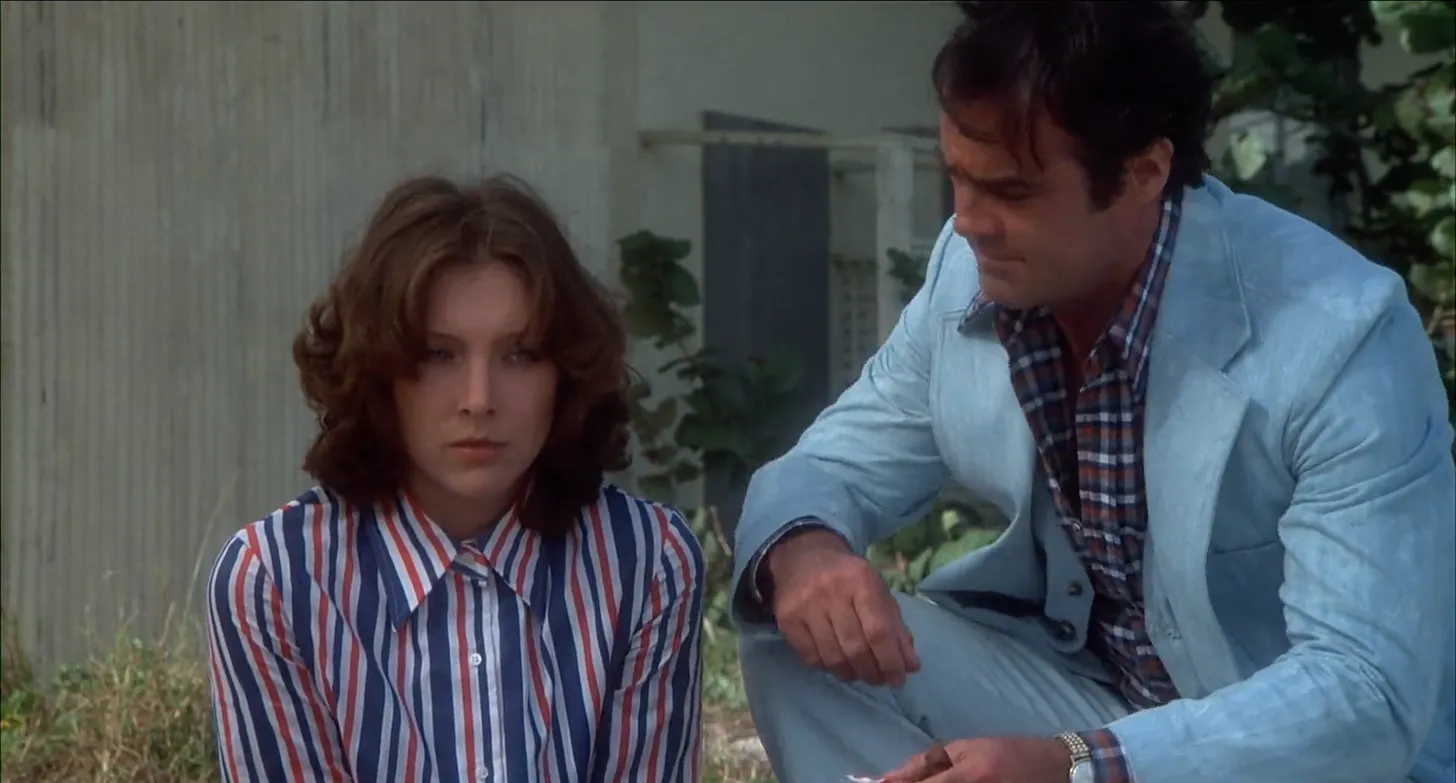 Here’s another reason this film frustrates me: Brooke Palance (daughter of Jack Palance), an, in my opinion, incredibly striking cinematic presence, is killed off too early. She shoulda made it to the end!
Here’s another reason this film frustrates me: Brooke Palance (daughter of Jack Palance), an, in my opinion, incredibly striking cinematic presence, is killed off too early. She shoulda made it to the end!
Empire of the Ants is one of the many not very good Bert I. Gordon movies. (At the very least, on a filmmaking level, I prefer The Food of the Gods, Earth vs. the Spider, and The Mad Bomber.) It spends the first thirty minutes introducing a group of characters, delineating their personalities and troubles. John David Carson hates his life and is looking for a change. Jacqueline Scott was fired from her job and it’s left her unmoored. Brooke Palance is married to Olympic-level creep Robert Pine. Pamela Shoop is creeped on by Olympic-level creep Robert Pine. Joan Collins hates Robert Lansing some, hates Robert Lansing some, loves Robert Lansing some, loves him when she forgets about herself. There are others, but it doesn’t matter — none of it registers as anything but Charlie Brown trombone noises. It’s possible acting could’ve salvaged this, but apart from Collins and maybe Scott, the calls, if you will, are coming from inside the house. (John David Carson was quite good in the 1976 squatchploitation flick Creature from Black Lake, but he seems checked out here. At the exact hour mark, it looks as if he’s trying to keep from laughing, presumably at the dialogue his co-star has to say.)
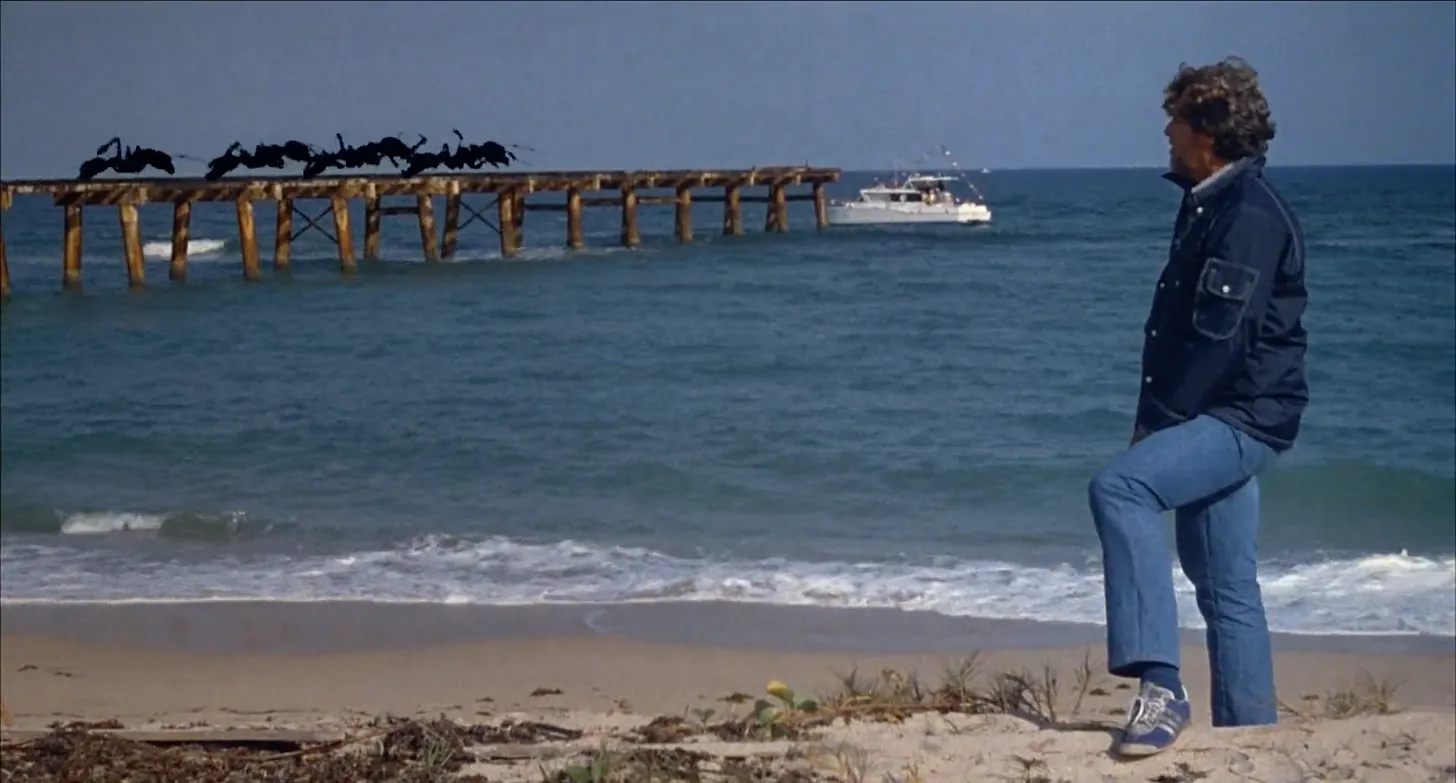 (extremely Kaneda in AKIRA voice) My boat?!?
(extremely Kaneda in AKIRA voice) My boat?!?
I’ve stated before that special effects aren’t important; bad ones don’t hurt good movies, and good ones don’t help bad movies. What’s unspoken in this imaginary matrix is the combination of bad effects in a bad movie. Well, it’s spoken here, quite loudly. Gordon is famous for his lousy special effects, primarily his use of rear-projection and process shots3. There’s nothing wrong with these techniques, and whether or not they’re “realistic” is beside the point. Gordon’s use of them, however, has historically left a lot to be desired. The close-ups of the ants are pleasingly gnarly, but there’s never a sense they occupy the same space as the characters, even with a heaping of audience imagination and goodwill. (This was not a problem, in my opinion, with the mice in The Food of the Gods, made only a year previous.) Because of the shoddy craftsmanship, the ants often crawl up invisible walls, something that plagued4 Gordon’s The Beginning of the End. “Bad” effects can feel handcrafted with care and love; these are just half-assed and cynical.
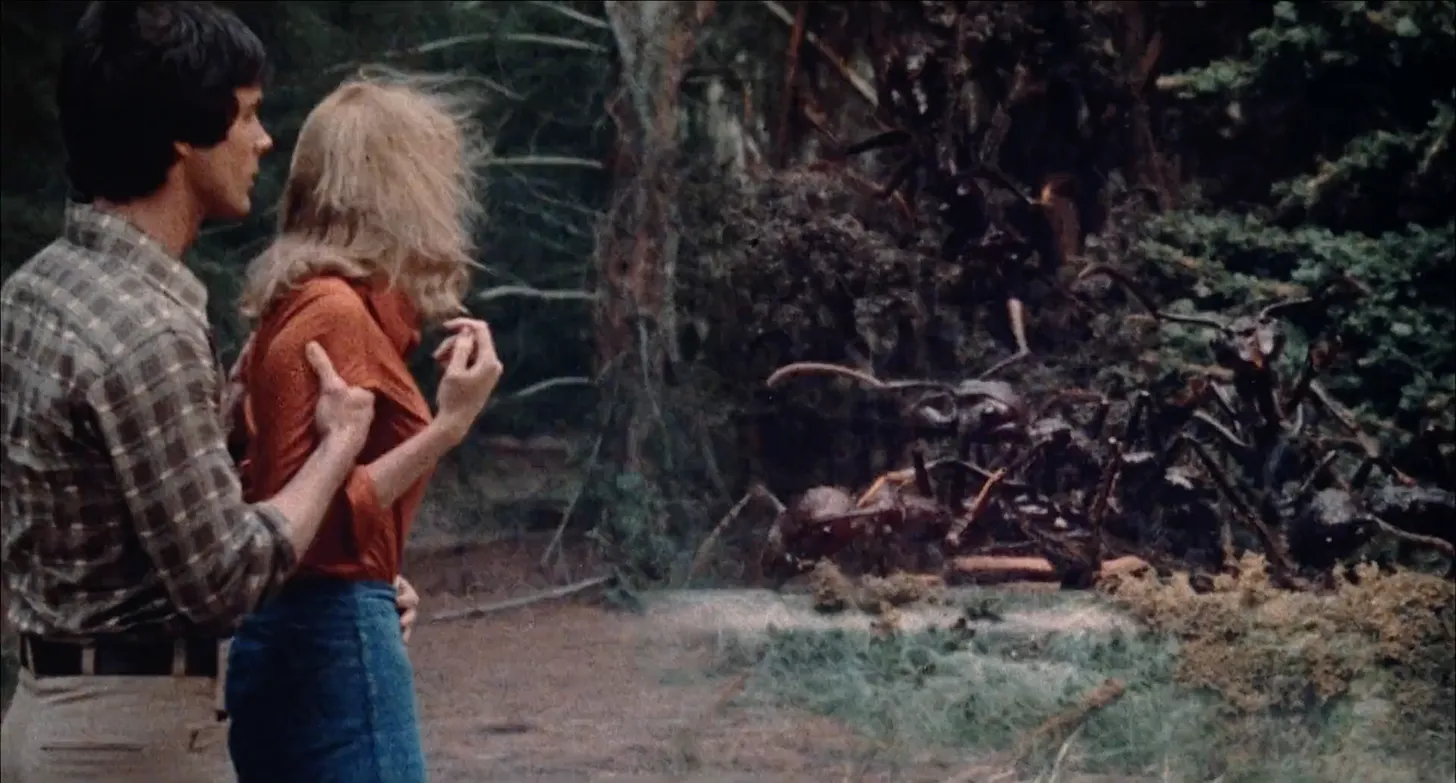 “We’ll be safe, as long as we stay on this side of the optical printer effect.”
“We’ll be safe, as long as we stay on this side of the optical printer effect.”
So: not a good movie. Yet: it’s the one Gordon film I’ve seen the most. Why would that be? Why, God, why have I seen this thing at least four times?
The frustrating answer is that, despite everything Gordon does to sabotage his own movie, there’s something there. It’s enervating to sit through, but once it’s done, it returns to my thoughts, over and over. (It makes no damn sense. Compels me, though.) After sitting with it, I can think of two reasons.
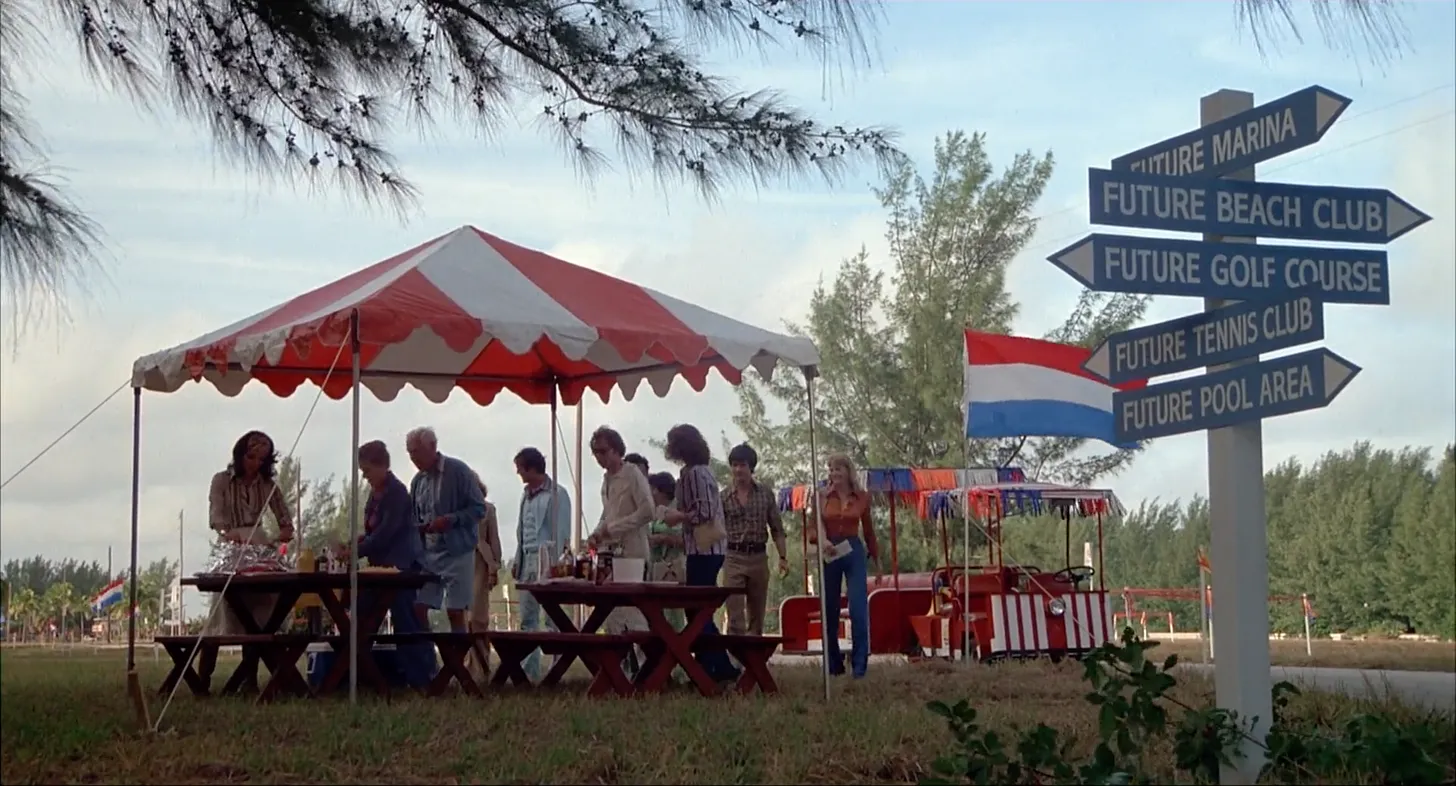 Sign, sign, everywhere a sign.
Sign, sign, everywhere a sign.
First, horror movies often use their atmosphere to create a space that feels doomed, a trap where the walls are closing in. Empire manages to do this with a wide-open beach and a vast expanse of jungle (as well as something else; see below). The location is not an island but a peninsula, which should reduce the tension — they’re not completely trapped — but Gordon makes it work, putting some kind of horizontal barrier (the ocean, the forest) at the back of the frame, like a theater scrim. The fake housing development is, in its own unique way, spooky, with its small grassy fields surrounded by dense foliage, and little tram paths weaving through them, little signs (“Future Golf Course,” “Future Pool Area”) like tombstones in a cemetery. Or even more accurately, the half-civilization, half-nature of the place has the forbidding feeling of a Friday the 13th campground. What’s more, it does all this while taking place almost entirely during the day5. Whether intentionally or not, Gordon decided to tackle the film’s atmosphere on “hard mode” and, to my stupefaction, succeeded. If I could create this kind of atmosphere at a table for a horror rpg session, I’d be a golden god.
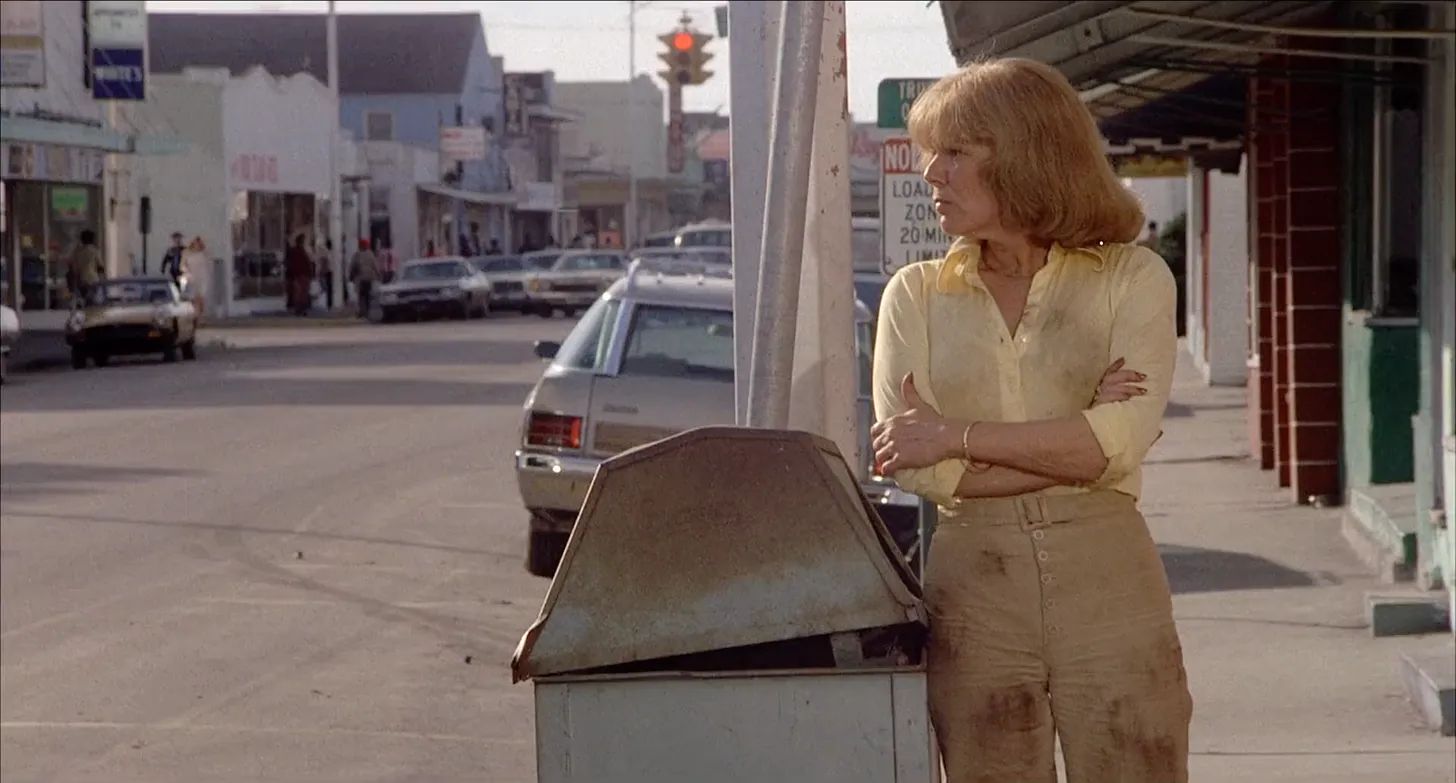 This is the beginning of one of the best shots Gordon ever made, in that it seems to be conveying one particular emotion and bit of information, and then slowly pulls back and moves around to reveal more details that upend that assumption.
This is the beginning of one of the best shots Gordon ever made, in that it seems to be conveying one particular emotion and bit of information, and then slowly pulls back and moves around to reveal more details that upend that assumption.
The second reason is the crazy twist in the last third. (I’ve given a spoiler warning at the top, but just to reiterate, this is a big spoiler, so fair warning.) The characters escape the jungle where they were being picked off one by one by the gi-ants and find… a town! With people! Safety! Rest! Showers! Of course, the town — and Gordon signposts this in his usual, unimaginative, lazy way — is under the control of the gi-ants. Turns out that if we were paying attention to the educational film-style prologue, we’d know that queen ants can use pheromones to control other ants. Here, the gi-ant queen is using pheromones to control the townsfolk, represented by a blast of dry ice from a big puppet inside a glass booth. Again, like the foreshadowing, all of this is dramatized in a perfunctory, borderline incompetent way. However, it doesn’t change the frisson of witnessing a movie change its genre midstream. Empire of the Ants starts out as a classic monster movie, that flips into an Invasion of the Body Snatchers-esque paranoia piece on a dime. The threat is the same, but how that threat changes, and how those changes are represented cinematically, is thrilling. The visuals move from the constrained and claustrophobic jungle to sugar cane fields and the wide open streets of Americaville USA, from lost in the wilderness to the familiar and comforting motel and car rental place6. But as soon as it introduces these elements, the film inverts them into places of unease and danger. It’s a narrative tactic that I wish more movies would try. Even though, for my movie-related rpg material, I’ve gone with a different idea, this concept of genre switching might be the one thing I suggest GMs take away from this for their own games.
Is there a deeper level to this film? Gordon, I think, would’ve said no, regardless what he actually thought; the huckster, by definition, can’t condone art. That said, the idea of a cross-section of America, looking for a new start and finding a dead end, looking for roots and finding empty pipes, looking for community and finding conformity, looking for freedom and finding conscripted labor enforced by state violence, is pretty potent, whether it’s the ’70s or the 2020s.
How many stars out of five? Two. As I said above, more fun to think about than to watch.
Where can I stream it? As of this writing7, Empire of the Ants can be streamed via Plex, and rented or purchased from Apple and Amazon.
What can we take from it? You were probably expecting ants. Ants are what you get. (And maybe a little twist, as a treat.)
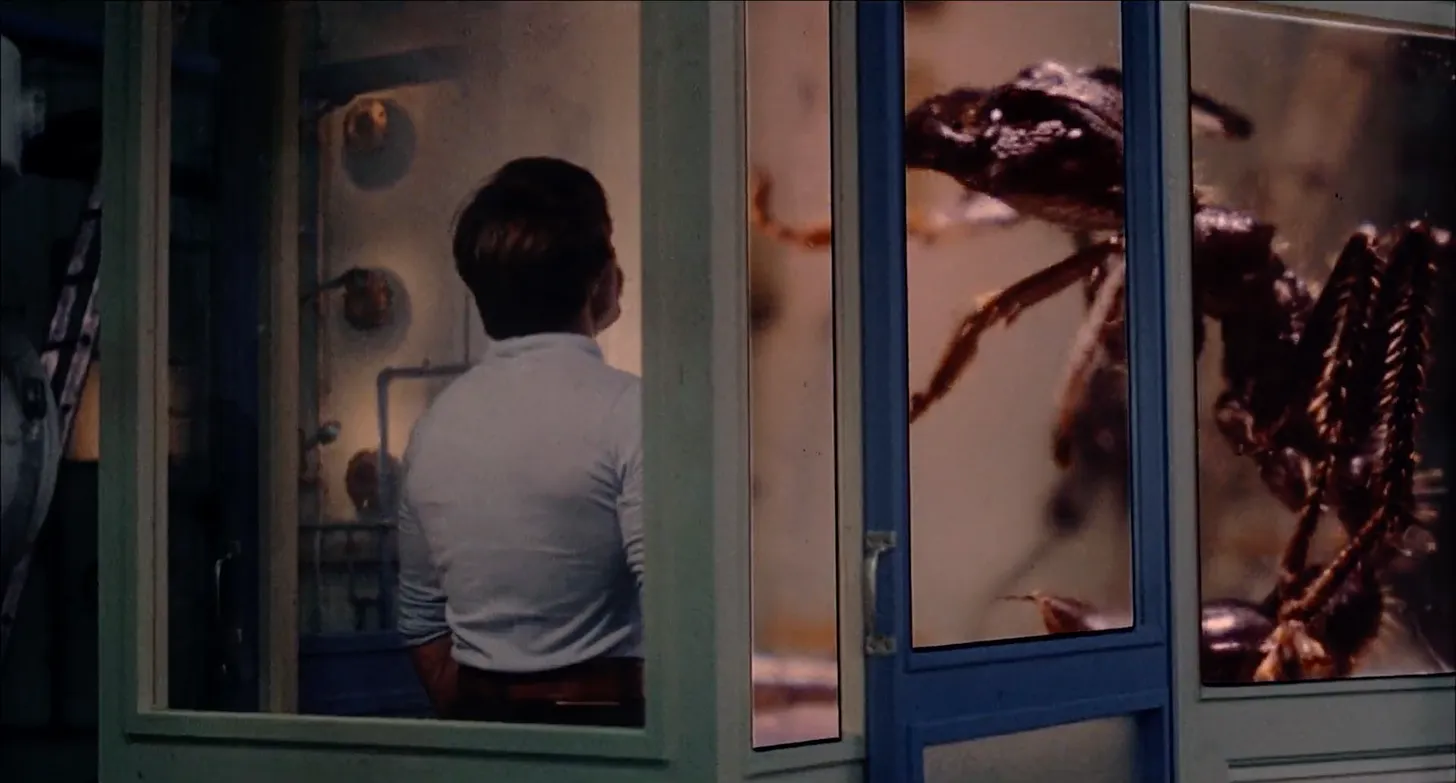 GI-ANTS AND GI-ANT QUEEN
GI-ANTS AND GI-ANT QUEEN
Level: 3 (for ordinary worker gi-ants; 9+ on a d20 to hit or avoid being hit) or 1 (for the queen; 3+ to hit or avoid being hit, but see below).
Description: The look like ordinary black garden ants, except unusually enormous. These ants are anywhere from 6-12 feet long, depending on how Gordon chose to film them that day. Technically, they should collapse from their own mass, but don’t.
Motive: Worker gi-ants: to serve the queen and eat sugar. Queen: to spray pheromones and make everyone, ant or human, do her bidding.
Environment: The Florida coast, where radioactive waste has been dumped into the ocean. They could be found anywhere ants and radioactive waste exists.
Health: 9 for worker gi-ants; 3 for the queen.
Damage Inflicted: 4 points for worker gi-ants; 0 points for the queen, but see below.
Movement: The gi-ants are remarkably big, but also still extraordinarily quick. They can cross a Long distance in one turn.
Modifications: The gi-ants can be incredibly quiet when they want to be; they are considered to be skilled in stealth at Level 4.
Combat: Worker gi-ants will try to crush humans with their enormous mandibles. However, if one successfully hits with a mandible attack, the worker gi-ant may instead opt to hold the human instead. Escaping from the mandibles is a Level 5 task. They may do this to take a human back to the queen for pheromone brainwashing. The queen does not normally attack, but instead sprays pheromones in a cloud that affects everyone in an Immediate range. Those who breathe in the cloud must make a successful Level 4 Intellect task or be under the control of the gi-ant queen for 24 hours.
Interaction: The gi-ants only wish to kill the characters, or capture them to take them back to the queen for pheromone mind control.
Use: After the events of the movie, a team is sent in to find and exterminate any remaining gi-ants. Unfortunately, it seems that some escaped and have created a new lair underneath the next town over. A new queen has pheromoned a local reporter, in order to use him to round up others to toil in the underground sugar caves.
Loot: Gi-ants carry no loot. A gi-ant queen might have 1d6 cyphers in her lair, or even an artifact.
GM Intrusion: A gi-ant makes a surprise attack from seemingly nowhere.
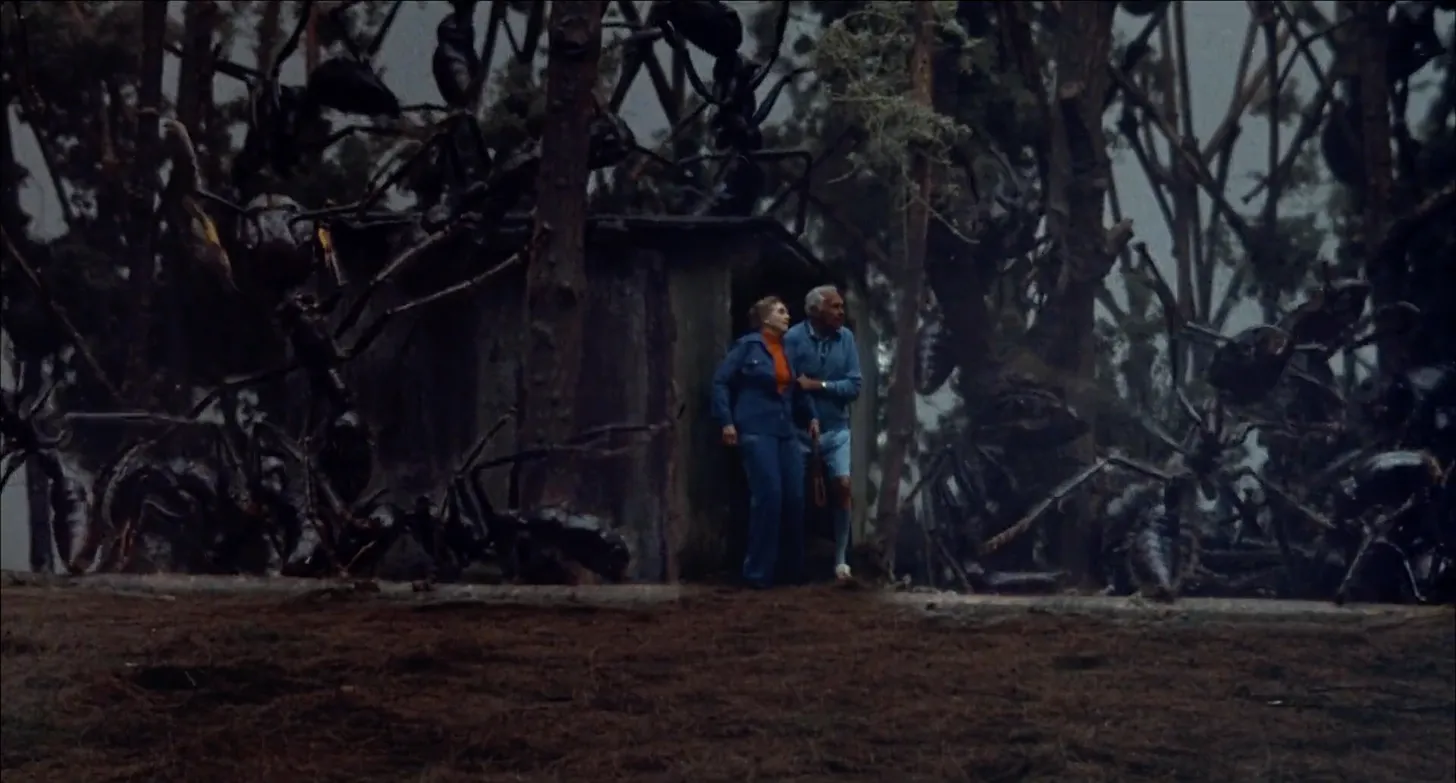 PROCESS SHOT VARIANT
PROCESS SHOT VARIANT
In this variant, the gi-ants aren’t actually there, but are photographic projections. Whether that’s because someone is creating them, or the characters come to understand they are in a terrible movie, or some stranger reason, is up to you. The characters believe they are real until they don’t anymore. When the characters fight or otherwise interact with the process shot ants, they use Intellect instead of Might or Speed. This is a clue that something is up for the players, but not necessarily the characters. If the players can justify why the characters might be suspicious of these ants, then characters that successfully make a Level 3 Intellect task realize the ants aren’t real. Once they do so, they are immune to them.
NEXT TIME, ON AGAINST THE ’70S: Every Which Way But Loose (1978, James Fargo)
The genre would reach its apotheosis right at the end of the decade with Prophecy (1979, John Frankenheimer), coming soon to Against the ’70s. [ETA 11/18/24: Still haven’t written that one, but I’ve got a hankerin’ to watch it again, so maybe soon for real this time?]↩︎
I’m genuinely thankful it was huckster auteur William Castle that discovered cockroaches and not B.I.G.↩︎
At the risk of destroying any credibility I (might) have (had), I confess I only understand the difference between rear-projection and process shots in a rudimentary way, and would not be able to tell you which is used in any given B.I.G. movie, or even if it was some other kind of effect. Sorry! All I can say with some degree of confidence is that Empire of the Ants uses the same technique as The Beginning of the End, a technique that, in Gordon’s hands, is both drowsy and lousy.↩︎
Puns.↩︎
I’m assuming that it takes place during the day as to limit the number of lights they’d have to drag out into the wilderness and riverbanks, but that’s just an assumption.↩︎
For another great example of a movie that moves from claustrophobia to agoraphobia as it raises the tension, see Rituals (1977, Peter Carter).↩︎
6/11/22↩︎
 11 Harrowhouse (1974, Aram Avakian)
Every Which Way But Loose (1978, James Fargo)
Originally published 6/17/22 on Substack This is the second winner of April’s movie poll, after Empire of the Ants. Inevitably, there are spoilers
11 Harrowhouse (1974, Aram Avakian)
Every Which Way But Loose (1978, James Fargo)
Originally published 6/17/22 on Substack This is the second winner of April’s movie poll, after Empire of the Ants. Inevitably, there are spoilers